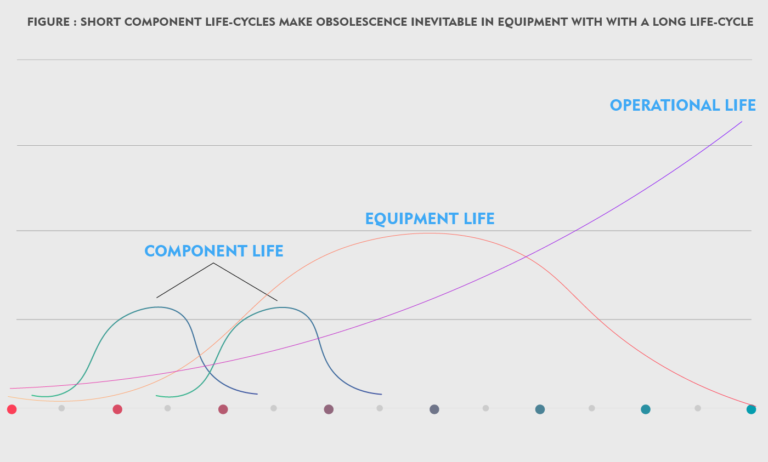- Home
- Who We Are
- What We Do
- Industry Applications
- Circular Economy
- Media
- Information Packs
- Interesting Reads
- What is Robotic Solder Dip (Retinning, Alloy Conversion, Alloy Refresh)?
- Reballing: What Is It And When Do You Need It?
- The Quiet Deadline: How Obsolescence Shapes Modern Production
- Safeguarding the Supply Chain: How Retronix Component Services Provides Solutions for High-Reliability Industries
- Is Your Supply Chain Safe? Combatting the Threat of Counterfeit Electronic Components
- Quality
- Contact
The Quiet Deadline: How Obsolescence Shapes Modern Production
A quiet but significant issue is at play in the world of manufacturing and technology: component obsolescence. It’s an issue that can bring production lines to a halt, trigger expensive redesigns, and threaten the long-term viability of products across a huge range of industries.
When a manufacturer issues an End-of-Life (EOL) notice for a component, it sends a powerful message to the entire industry. The notice often specifies a last-time-buy date, a final shipment date, and an end-of-support date.
This triggers a flurry of activity for any business that relies on that part. Companies must assess their current inventory, forecast future needs, and make a crucial decision: place a large, one-time “lifetime” buy to secure enough components to last for the product’s entire lifecycle, or initiate a potentially expensive and time-consuming redesign of their product to use an alternative part.

Who feels the pain?
Component obsolescence affects all industries differently. Sectors with long product lifecycles, such as aerospace, defence, medical devices, and rail, are particularly vulnerable. A piece of equipment designed to last for decades, like a train signalling system or a piece of medical imaging technology, often relies on components that may only be in production for a few years.
This EOL notice is the starting pistol for a race against time, forcing procurement teams, engineers, and supply chain managers to find a solution that avoids production line shutdowns and future product support issues.
This creates a critical mismatch, requiring companies to manage a continuous process of sourcing and replacing parts to ensure functionality and safety. For these sectors, a component becoming obsolete is a strategic and operational risk that can compromise safety, reliability, and regulatory compliance.
However, the problem isn’t limited to these fields. Automotive manufacturers, industrial automation companies, and even consumer electronics firms also face these challenges.
A discontinued part can disrupt production lines, increase costs, and lead to delays. The interconnected nature of the global supply chain means that a single point of failure can have widespread consequences.

The Accelerating Trends
Several trends are accelerating the rate at which components become obsolete. The rapid pace of technological innovation is a primary driver. As new and improved parts are developed, manufacturers naturally shift their focus, phasing out older, less efficient components. This has significantly reduced the average lifespan of many semiconductors.
Other factors include market demand and economic incentives. When demand for a legacy part drops, it often becomes uneconomical for a manufacturer to continue production. regulatory changes, like new environmental or safety standards, can force a part to be discontinued if it no longer complies. Supplier consolidation through mergers and acquisitions can also lead to product line rationalisation, where less profitable components are cut.
The Strategic Solution
To manage these challenges, businesses are increasingly turning to strategic partners. This is where Retronix comes in providing solutions that mitigate the risks associated with component obsolescence. Retronix’s services focus on the recovery and refurbishment of obsolete parts. We can recover discontinued electronic components from existing stock, prepare them for reuse, and reintroduce them into the supply chain.
A cornerstone of this offering is reballing and retinning processes that restore the integrity of a component’s solderability and connections, making it ready for use in a new system. Retronix also provides comprehensive testing to ensure every refurbished component meets strict quality standards.
By offering these services, Retronix helps companies extend the life of their products, reduce waste, and avoid the costly and time-consuming process of a full redesign.
Having a reliable partner like Retronix with specialised expertise is a significant advantage.
Contact Us To Know More
© 2024
UK: Retronix, North Caldeen Rd, Coatbridge, Scotland, United Kingdom. ML5 4EF / Email: sales@retronix.com / Phone: +44 (0) 1236 433 345
USA: Retronix Global Inc, 1007 S Heatherwilde Blvd, Ste.300, Pflugerville, TX, 78660 / Email: USA@retronix.com
USA: Retronix, 10560 Dr.M.L.K Jr Street North, St.Petersburg, FL, 33716 / Email:USA@retronix.com

